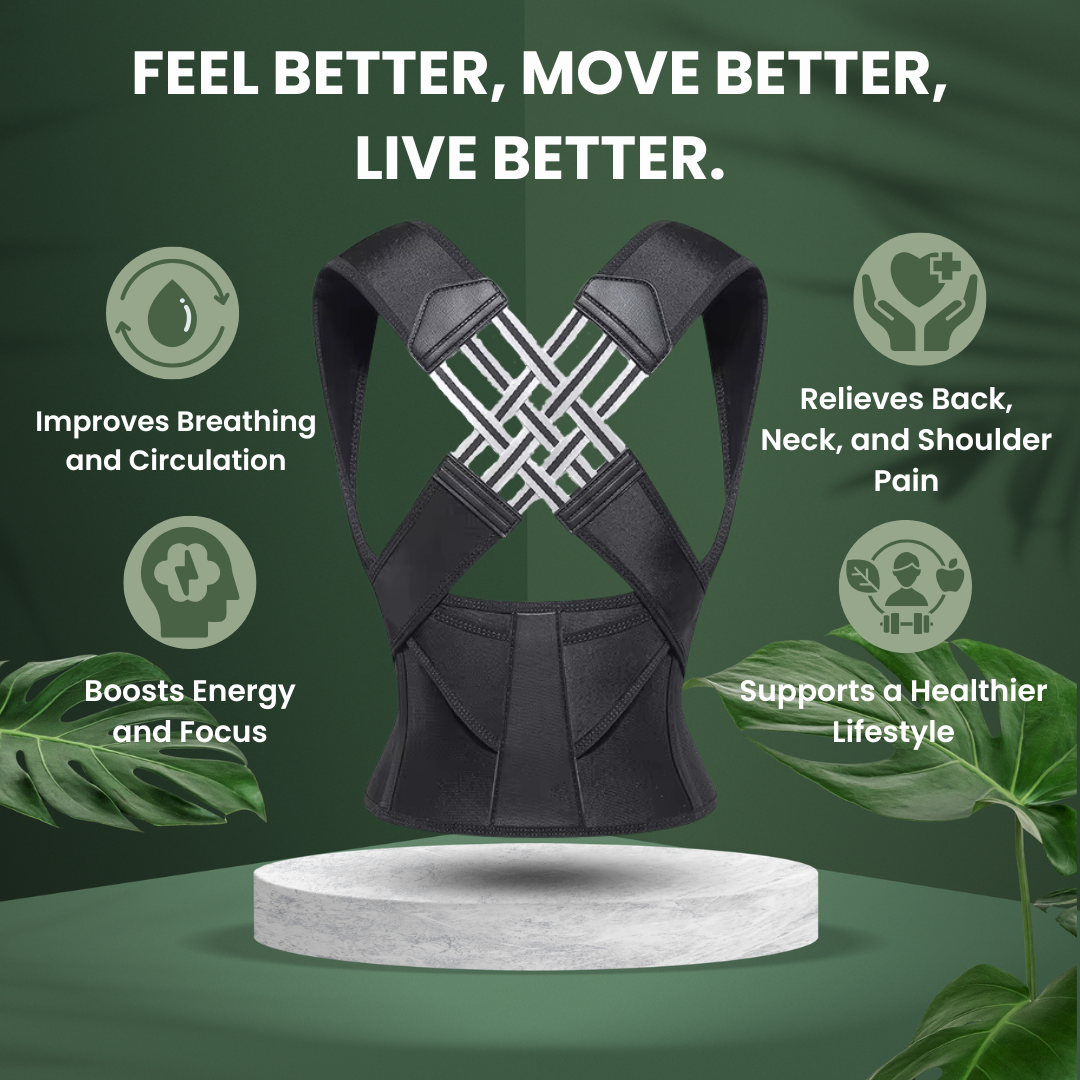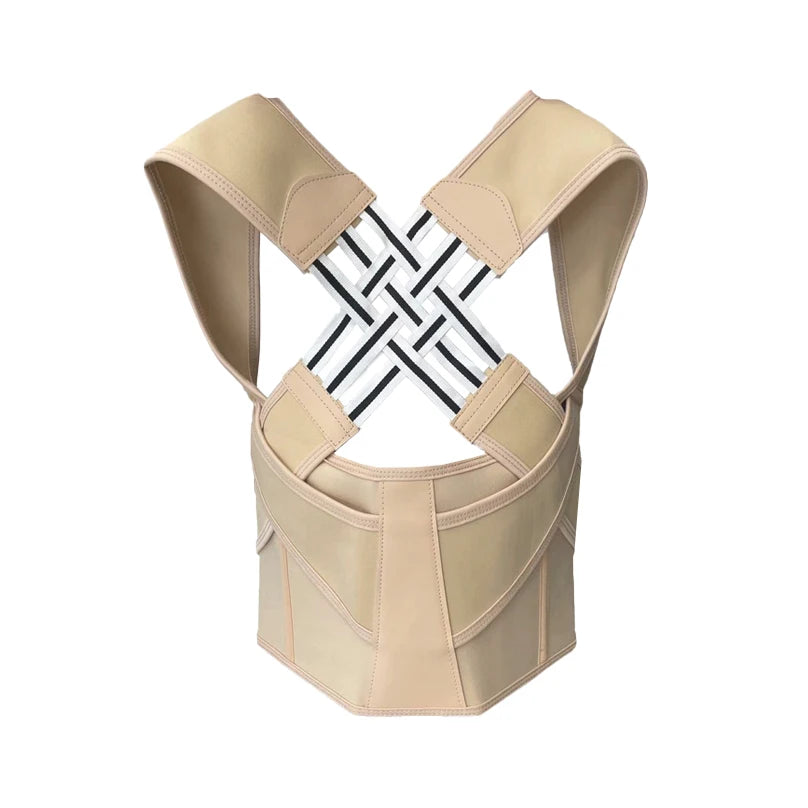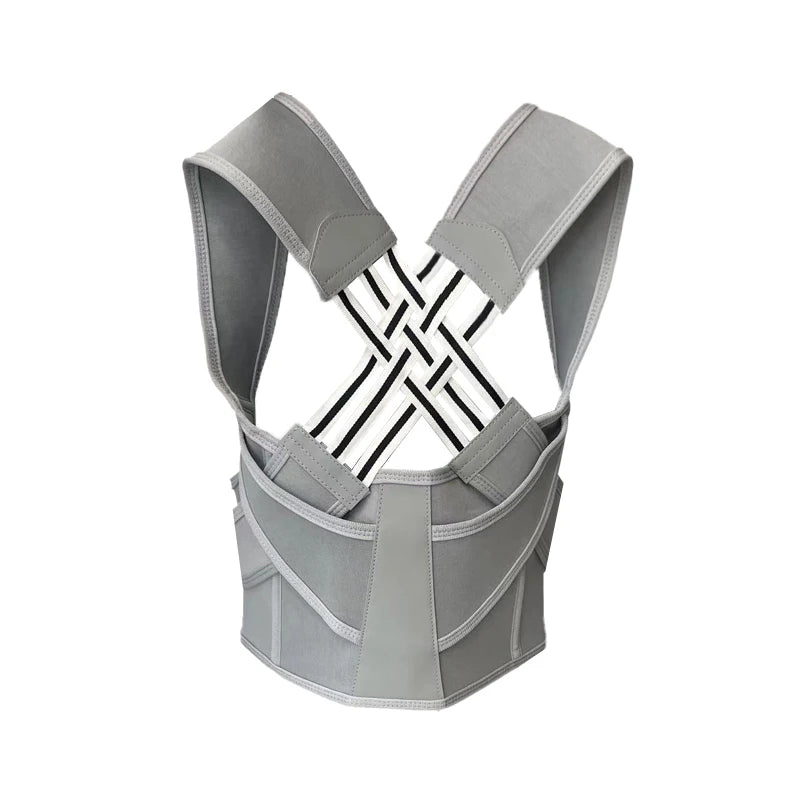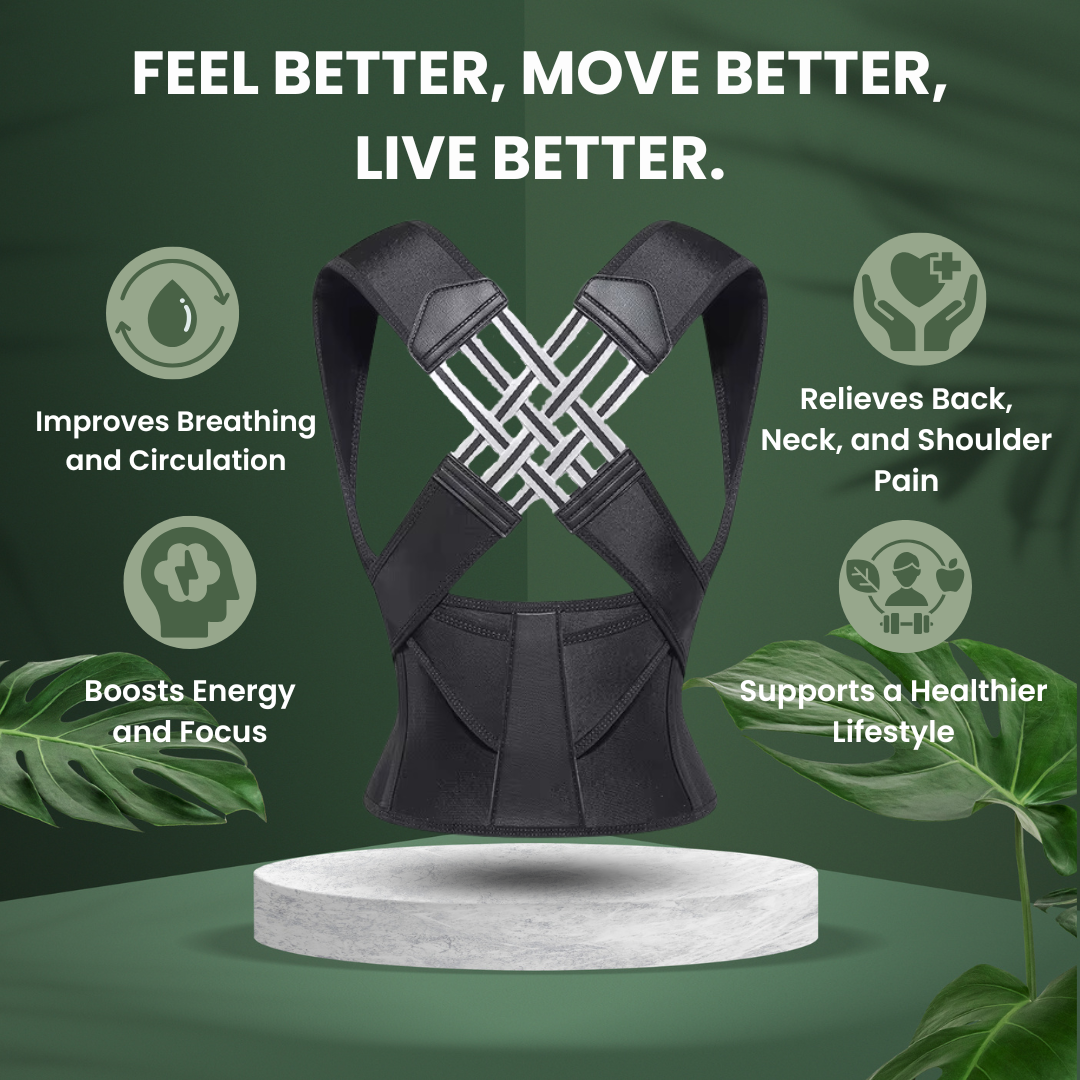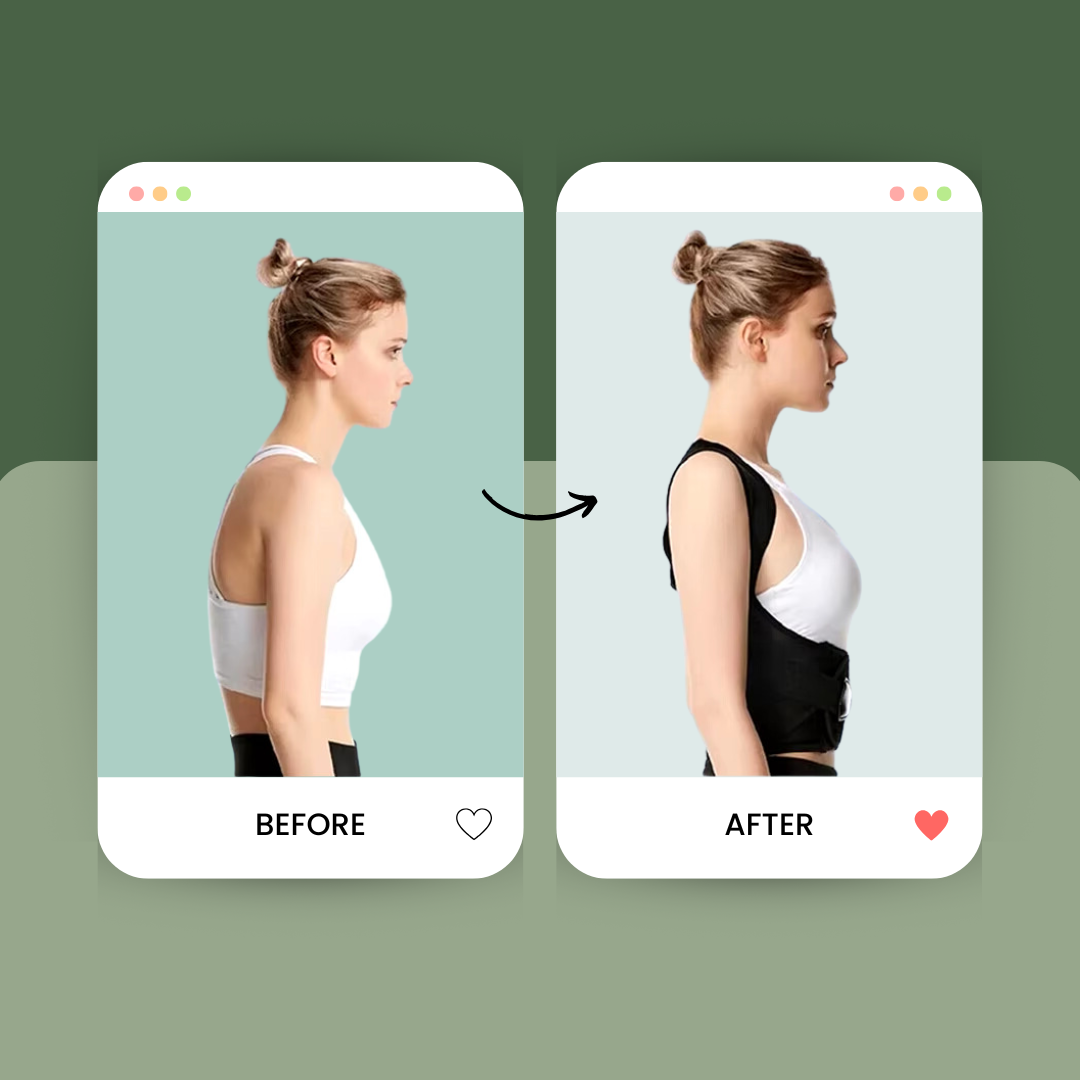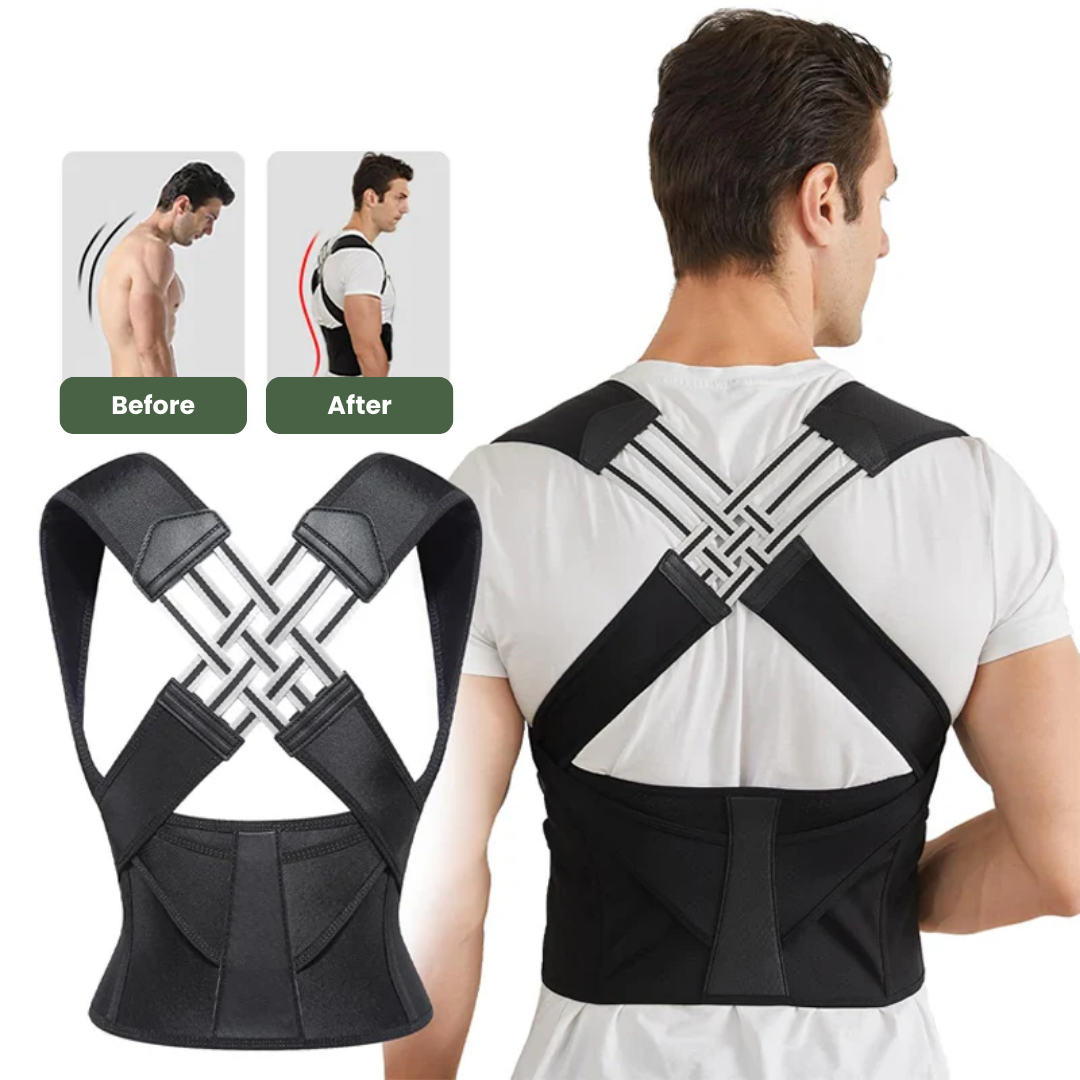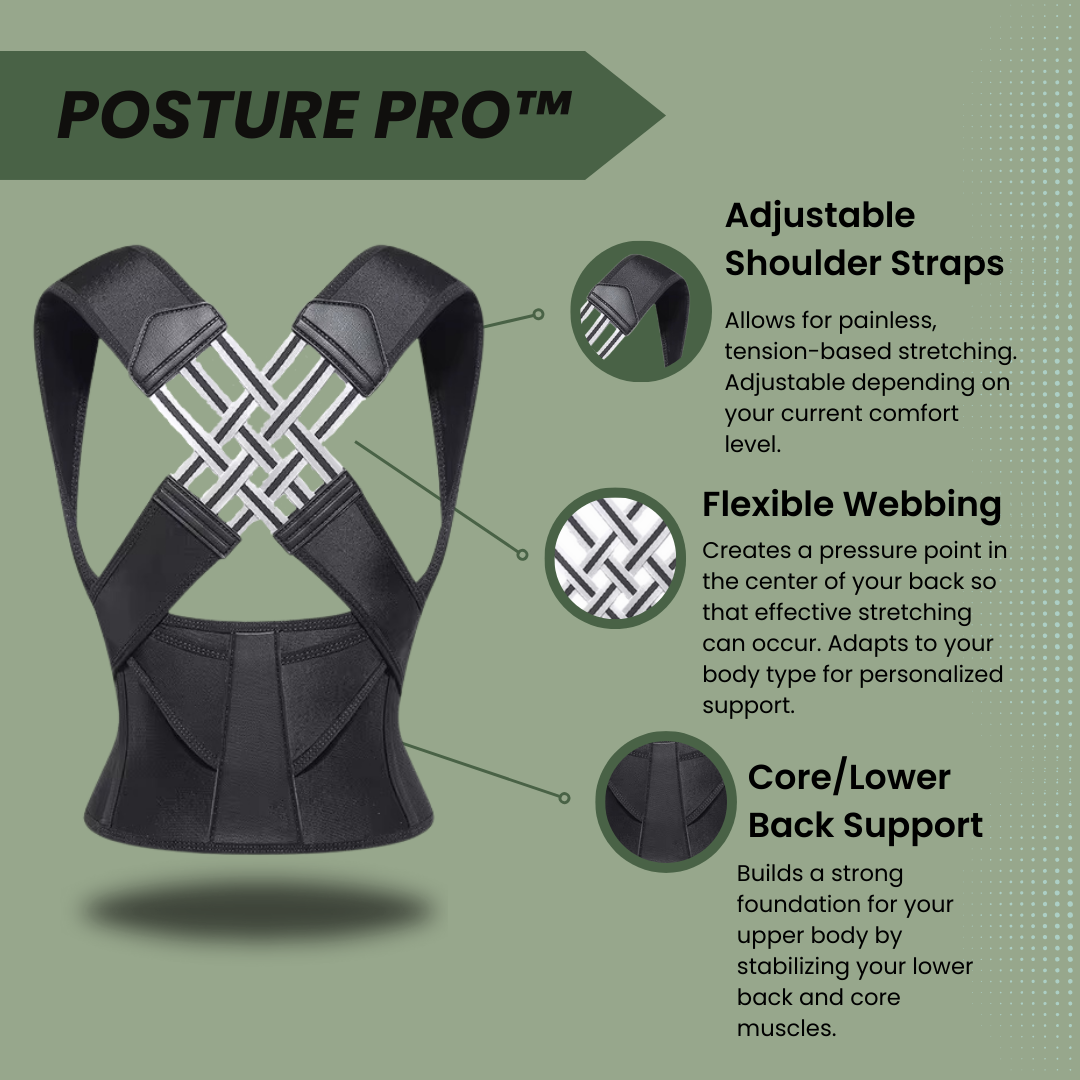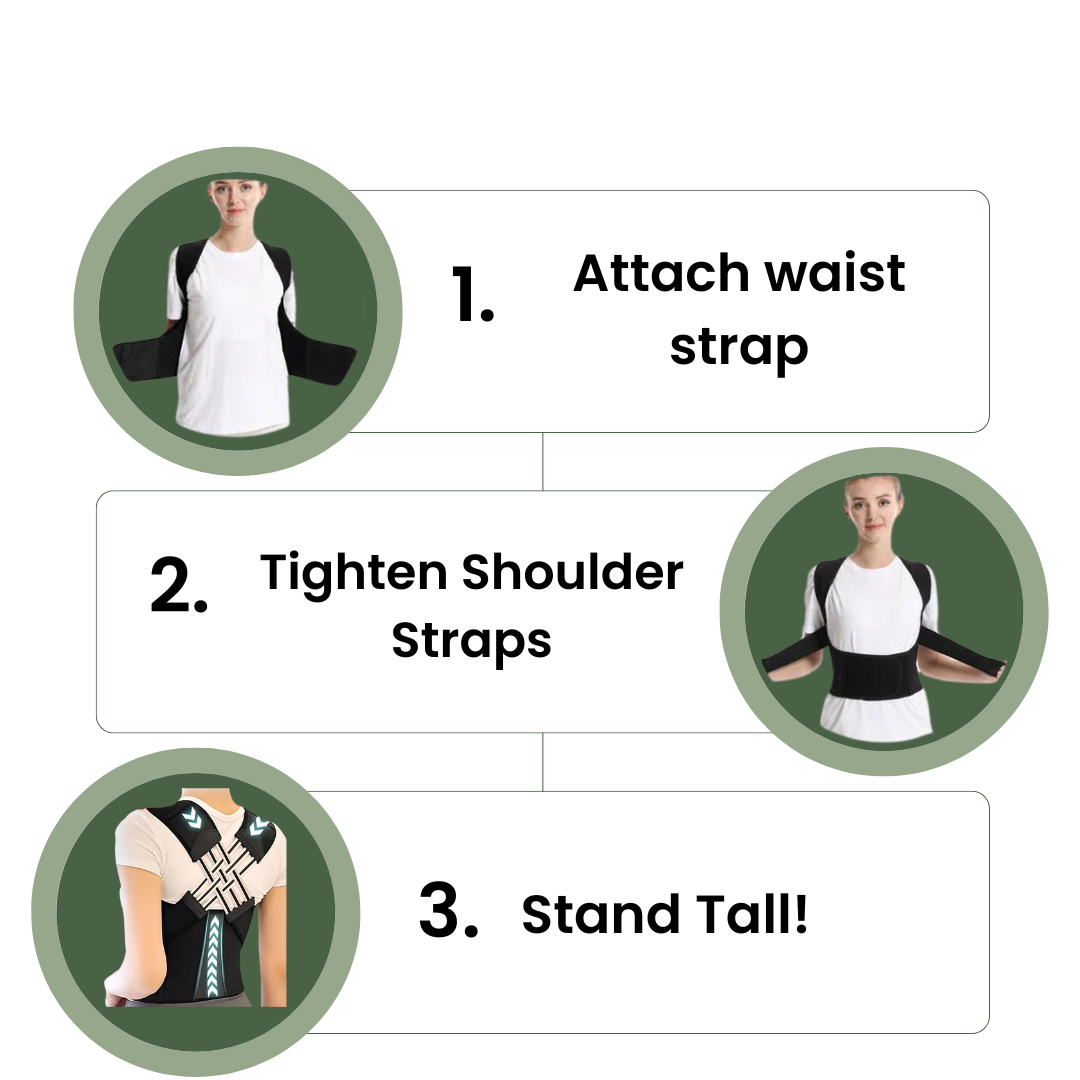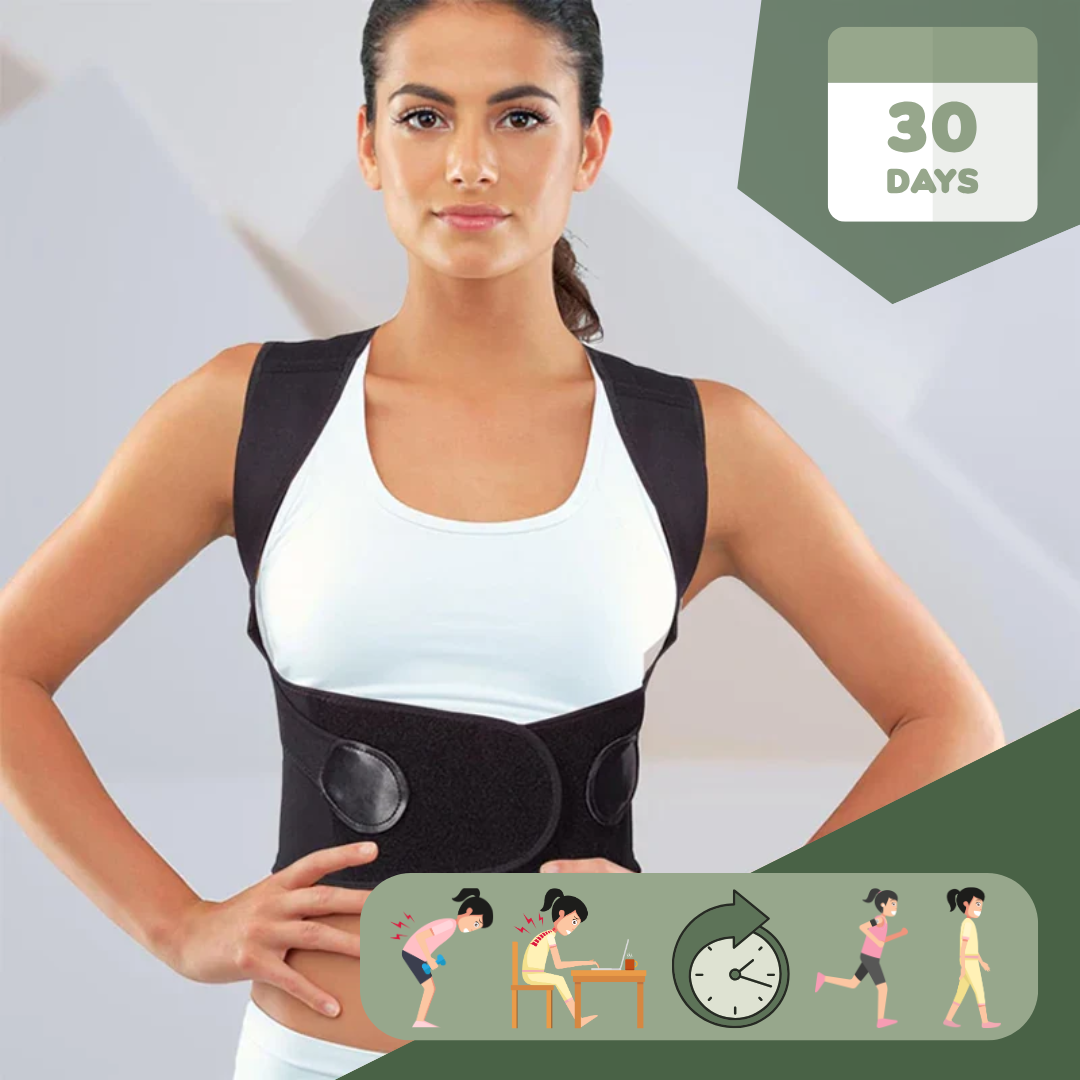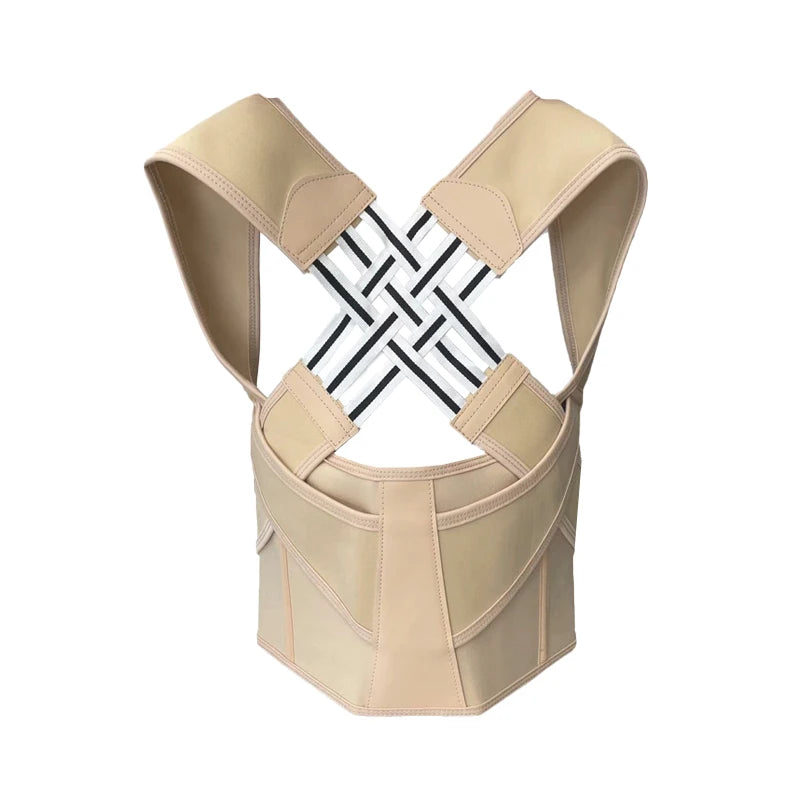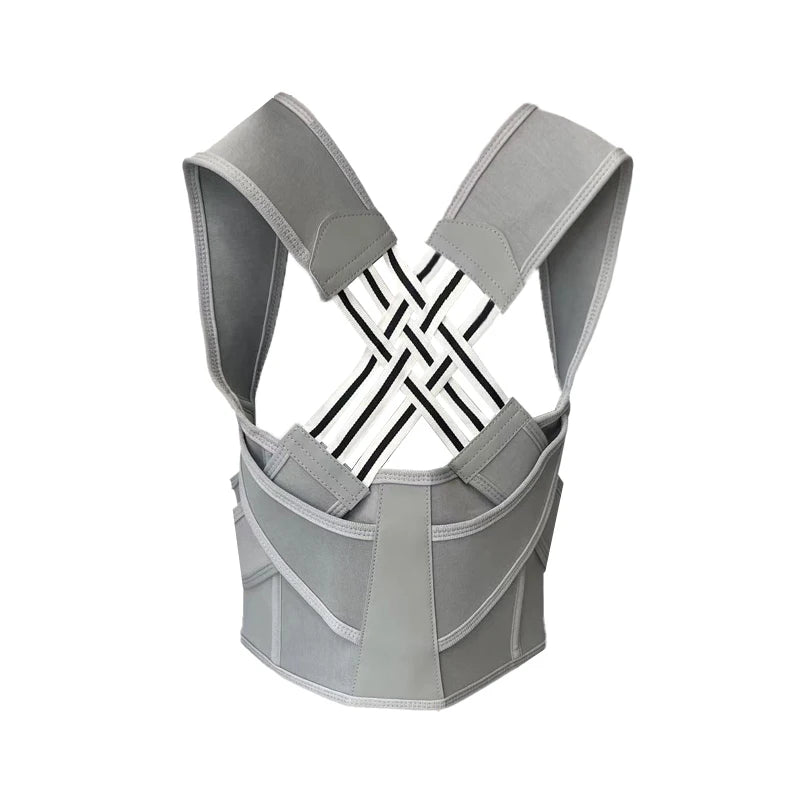Many people today struggle with back and neck pain. This often comes from sitting too much, especially at computers. Our article explains how posture correctors can help solve these issues.
Keep reading to learn more about your health.
Key Takeaways
- Poor posture can cause back pain, neck and shoulder strain, and might even contribute to conditions like scoliosis.
- Incorporating posture correctors with exercises aids in improving spine alignment and lessening discomfort.
- Excessive time spent on computers contributes to poor posture, affecting roughly 40% of adults with neck and shoulder issues.
- Persistent effects of inadequate posture include joint fatigue, muscle soreness, and decreased lung capacity.
- It's crucial to use tools like posture correctors and to practice positive habits such as stretching and creating an ergonomic workspace.
Common Health Issues Related to Poor Posture

Poor posture can lead to back pain, causing discomfort and limiting mobility. It can also strain the neck and shoulders, contributing to stiffness and soreness.
Back Pain
Back pain often starts from spending too much time on computers. This leads to bad posture. Poor habits like slouching hurt our back over time. Experts say using posture correctors can help fix this problem.
These devices make our muscles work right and keep the spine straight.
Good posture supports the musculoskeletal system, which keeps us healthy. Exercises can also strengthen back muscles, helping even more with pain. It's best to use posture correctors as part of a bigger plan that includes moving and stretching regularly for a stronger back and better health overall.
Neck and Shoulder Strain
Poor posture, like slouching and having rounded shoulders, can cause neck and shoulder strain. Many people sit at computers a lot, especially during the pandemic. This has made neck and shoulder problems worse.
About 40% of adults might get neck and shoulder strain because of how they sit or stand.
Using posture correctors can help fix these strains. These tools have adjustable straps to make them fit right. They also offer lumbar support to keep your spine straight. For better neck and shoulder health, it's good to do exercises that make your posture stronger.
A physical therapist can show you which exercises work best for this problem. They understand human anatomy well and know how to ease the pain in your lower back too.
Scoliosis and Spinal Misalignment
Scoliosis is when the spine curves to the side. This can make standing up straight hard. It often starts in kids but can get worse as they grow. Back pain and trouble breathing are common problems for people with scoliosis.
Experts like physical therapists work to help fix spinal misalignment using exercises, posture correctors, and sometimes more serious treatments like surgery. A back brace may also support the spine, making good posture easier and helping stop the curve from getting worse.
Good posture supports a healthy spine.
How Poor Posture Impacts Long-Term Health
Poor posture can lead to joint and muscle fatigue, affecting the body's ability to move effectively. It may also reduce lung capacity, impacting overall respiratory health over time.
Joint and Muscle Fatigue
Poor posture often results in tired and achy muscles, particularly in the neck, upper back, shoulders, and lower back. This occurs when you slouch or hunch over for extended periods, putting strain on these muscles.
Prolonged poor posture is often associated with increased use of technology and can lead to conditions like "text neck," where your head juts forward due to frequent phone or computer use.
Continuously relying on posture correctors might appear helpful but could impede natural adjustments that your body needs to make. It may contribute to fatigue instead of addressing the root cause of discomfort related to poor posture.
It's crucial not only to utilize tools such as adjustable straps or lumbar support but also to include stretching exercises and strengthening routines into your daily habits. These practices help prevent joint and muscle fatigue associated with poor posture while promoting better overall health.
Reduced Lung Capacity
Reduced lung capacity is a potential consequence of poor posture. Slouching and having a forward head position can compress the respiratory system, limiting efficient breathing. This decreases oxygen intake over time, impacting overall health negatively.
However, improved posture through exercises and body positioning awareness can promote better alignment and enhance lung capacity.
Proper posture allows for full expansion of the chest and abdominal cavity, supporting optimal lung function. When individuals adjust their body positioning to maintain good posture, they can also positively influence their ability to breathe effectively.
Can Posture Correctors Help?
Can posture correctors improve your posture and reduce pain? How do they work and what are the benefits of using them?
How Posture Correctors Work
Posture correctors are crafted to realign your spine and enhance posture. They function by utilizing adjustable straps or lumbar support to draw shoulders back, aligning the spine correctly.
These devices heighten body awareness effortlessly, akin to training wheels on a bicycle. Some variations consist of supportive shirts crafted from breathable material or harness-like devices that actively readjust shoulder positioning.
Furthermore, electronic sensory feedback devices are accessible.
To attain effective results, experts propose coupling posture correctors with exercises that fortify posture for long-term natural alignment. It's essential to avoid excessive reliance on these devices, as prolonged use without breaks may foster dependency.
To optimize benefits, experts also recommend integrating them with ergonomic workspace adjustments and regular stretching exercises.
Benefits of Using Posture Correctors
Using posture correctors can provide numerous benefits to improve your overall health and well-being.
Wearing posture correctors helps alleviate back pain, enhance digestion, and increase breathing capacity.
They facilitate muscle imbalances caused by prolonged poor posture, especially due to extensive computer use.
Posture correctors are available in various forms such as harnesses, shirts, or adhesive pads for improved body awareness.
These devices aid in internalizing proper posture over time and are usually recommended to be worn for a few hours daily to avoid dependence on them.
Conclusion
In closing, maintaining good posture is crucial for preventing various health issues. It can help alleviate back pain, neck strain, and other discomforts associated with poor posture.
While posture correctors may offer some support, they should be used alongside exercises and regular movement to build lasting strength and awareness. Ultimately, being mindful of how we position our bodies throughout the day can significantly contribute to overall well-being and comfort.
FAQs
1. What are posture related health issues and how can a posture corrector help?
Posture related health issues often include neck pain, lower back pain, and problems with shoulder alignment. A good posture corrector provides lumbar support and helps in spine alignment, which can alleviate these pains.
2. How does a physical therapist recommend using a posture corrector for optimum results?
A physical therapist may suggest wearing the posture corrector like training wheels - initially for shorter periods to build muscle memory. They might also recommend combining its use with stretching exercises for overall posture improvement.
3. What should I look for when buying a posture corrector online?
Check customer reviews to understand if the product offers comfortable fit and is made of breathable material. Also check out the return policy to ensure it's a secure transaction.
4. Can I use my Flexible Spending Accounts (FSAs) or Health Savings Accounts (HSAs) to purchase a Posture Corrector on Amazon?
Many products including Posture Correctors qualify for purchase using FSAs or HSAs payment cards on Amazon Prime.
5. Are there any other methods apart from wearing a back brace that could help improve my posture?
Indeed! Physical therapy involving chiropractic adjustments is highly beneficial. Breathing exercises too can enhance your proprioceptive senses leading to improved body awareness and better postural habits.
6. If I work long hours at an office chair, what steps can I take towards improving my bad postures?
Incorporating regular stretching exercises into your routine while at work could be helpful in mitigating lower back pain caused by poor sitting postures.



